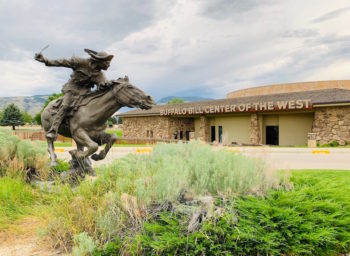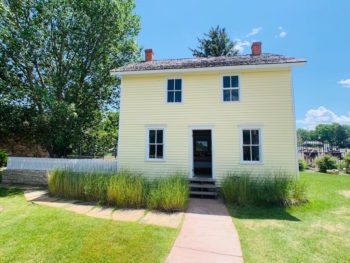 By Michael Swanger
By Michael Swanger
As I stepped off the airplane that landed at Yellowstone Regional Airport to begin our family summer vacation, I noticed the large sign that read, “Welcome to Cody, Wyoming.” It was the first of numerous, ubiquitous reminders of the diverse trails blazed out West by Iowa native and American icon William Frederick Cody, a.k.a Buffalo Bill, that would provide a greater appreciation for his monumental legacy.
Born in Scott County, Iowa Territory, on Feb. 26, 1846, Cody later became famous for his work as a U.S. Army scout, frontiersman and founder of “Buffalo Bill’s Wild West.” By the end of the 20th century, thanks to dime novels and international newspaper stories, Cody was the most popular celebrity in the world. Still, more than a century after his death on Jan. 10, 1917, his visionary efforts continue to entertain, inform and affect us in ways that most of us do not fully understand.
In the town of Cody, which bears his name, a few examples stood out.

Photos by Michael Swanger
First and foremost, was our visit to the Buffalo Bill Center of the West. It not only tells Cody’s amazing story, but it features rare memorabilia such as his clothes, guns, saddles and Wild West posters in the Buffalo Bill Museum. Outside, three impressive statues of Cody welcome visitors.
The Center also features Cody’s boyhood Iowa home. Built in 1841, it was moved from its original location  on the banks of the Mississippi River to the Big Horn Basin in 1933 when the Chicago, Burlington and Quincy Railroad purchased it for $150 and transported it 1,200 miles from Iowa to Wyoming. In 2004, the Buffalo Bill Museum moved the two-story, yellow clapboard home to its current location at the Center, where visitors can tour it.
on the banks of the Mississippi River to the Big Horn Basin in 1933 when the Chicago, Burlington and Quincy Railroad purchased it for $150 and transported it 1,200 miles from Iowa to Wyoming. In 2004, the Buffalo Bill Museum moved the two-story, yellow clapboard home to its current location at the Center, where visitors can tour it.
The Buffalo Bill Dam, near Buffalo Bill  State Park, was the tallest dam in the world when completed in 1910. Built with almost 83,000 cubic yards of concrete and without steel reinforcement, it stands 325 feet high and 200 feet wide and sits on the bed of the Shoshone River in a canyon. The short trip to its visitor center is worthwhile as it offers a memorable view of the spillway and exhibitions about its namesake and how he recognized the importance of water to help build the West. Iowans might note that it was surpassed in height by the Hoover Dam in 1935, named after another famous Iowan, President Herbert Hoover.
State Park, was the tallest dam in the world when completed in 1910. Built with almost 83,000 cubic yards of concrete and without steel reinforcement, it stands 325 feet high and 200 feet wide and sits on the bed of the Shoshone River in a canyon. The short trip to its visitor center is worthwhile as it offers a memorable view of the spillway and exhibitions about its namesake and how he recognized the importance of water to help build the West. Iowans might note that it was surpassed in height by the Hoover Dam in 1935, named after another famous Iowan, President Herbert Hoover.
Also notable were Buffalo Bill’s Irma Motel, Restaurant and Saloon, built by Cody and named after his daughter; and Old Trail Town, the site where in 1895 he laid out the original townsite for Cody.
Cody is credited for being many things, including a visionary businessman and history enthusiast. Allegedly, his final words were, “Let my show go on.” For those who journey West, you can plainly see that it does.
TO READ MORE FASCINATING STORIES ABOUT IOWA HISTORY, subscribe to Iowa History Journal. You can also purchase back issues at the store.
